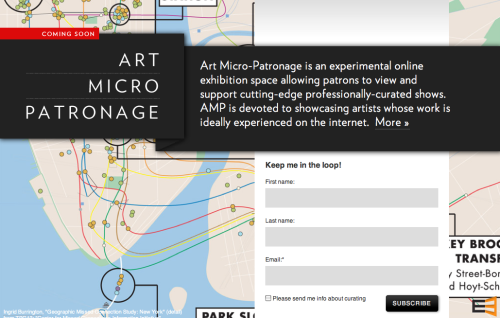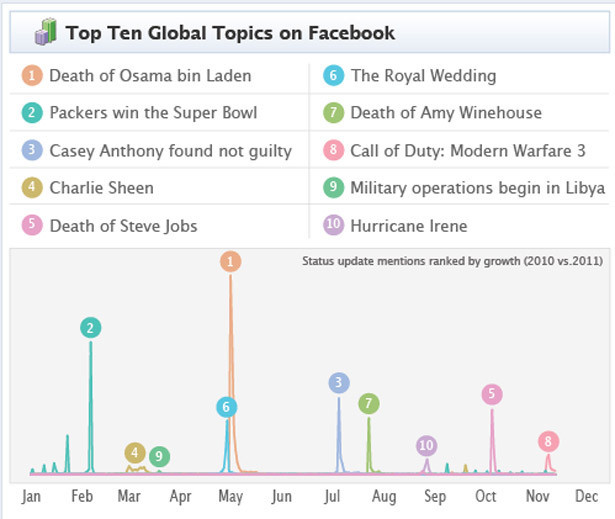

Colonialism has consistently been a force in the global purview, including the technological space. In recent years, the expansion of artificial intelligence has vastly increased corporations’ global influence. As the world’s technologies continue to advance and innovate, individuals must keep a watchful eye on the ways in which digital colonialism might repeat harmful practices from the past.
Due to the popularity and booming business of video games, Hollywood studios have capitalized on popular game titles by developing new content based off of their intellectual property (IP). This study sets out to better understand video game IP’s impact on film and television markets and what specific elements might impact an adaptation’s success.
Sustainability and AI were at the forefront this year at the American Alliance of Museums (AAM) Future of Museums Summit. What role will museums play in creating climate-friendly communities? And how can AI be used to maximize efficiency, increase accessibility, and deepen engagement? Read key conference takeaways from Xueer Ho and Dr. Brett Ashley Crawford.
An overemphasis on data-driven work within the nonprofit sector has been shown to result in cycles of disempowerment, driven by third-party data demands of funding bodies.. This compounds due to the many market orientations nonprofits need to adopt, particularly prevalent among the arts. A key to navigating these markets and funder requirements lies in identifying a specific data culture best fit for your organization and investing in resources and training in order to achieve that framework sustainably.
With AI’s ability to automatically produce content and process complicated datasets with high accuracy, museums worldwide are exploring ways in which this innovative technology can help them better achieve their missions and advance accessibility efforts. Through case studies, learn about three applications of this technology: content digitalization, language accessibility, and visual description.


As the year comes to a close, let’s take a look at what topped the charts in the art world in 2011.
1. The top 100 of the art world’s most powerful figures from ArtReview
2. The top 32 Facebook Best Practices from DIOSA Communications
3. The top 10 reasons to support the arts
4. The top 10 companies supporting the arts in America according to Americans for the Arts
5. The top 10 works of art and architecture according to Philip Kennicott for the Washington Post
6. The top Twitter topics and hashtags according to Mashable
7. The top global topics, statuses, sports teams, music, articles and the like shared on Facebook (for all the locals: the Steelers obviously made the cut) according to Mashable
 8. The top 50 not-for-profit executives according to the NonProfitTimes
8. The top 50 not-for-profit executives according to the NonProfitTimes
9. The top 15 museums in the world according to the Huffington Post
10. The top 10 private museums worldwide
We here at Technology in the Arts look forward to sharing with you new technological advances, best practices and trends in the upcoming year!
 In the world of public policy, ideas are a dime a dozen. From issues ranging from education to trade issues, everyone has their opinion about the best course of action the government should take. What’s often missing, however, are new and exciting ways to present these ideas, taking formally bland issues and finding new ways to solve them.
This is where the arts community comes in.
In the world of public policy, ideas are a dime a dozen. From issues ranging from education to trade issues, everyone has their opinion about the best course of action the government should take. What’s often missing, however, are new and exciting ways to present these ideas, taking formally bland issues and finding new ways to solve them.
This is where the arts community comes in.
While city planning and urban development may not be the most exciting issues to talk about, an exhibit in New York City is showcasing four artists who are attempting to use the power of artistic expression to bring attention to urban planning issues that are present in their communities. By offering a unique way of examining these often complicated public policy issues, the hope is that visitors will leave with a heightened sense of the issues that are affecting their community.
The exhibition, “Civic Action: A Vision for Long Island City,” opened on October 13th of this year and continues until April 22, 2012 at the Noguchi Museum and Socrates Sculpture Park in the Long Island City community of Queens, New York. The exhibit has received a fair amount of press attention, including a great write-up in The New York Times last week.
There have been similar art exhibits where policy ideas are presented by artists themselves, who often have no connection to the policy community or stakeholders. What’s unique about this project is that the four artists involved where all invited to partner with an urban planner or architect to imagine and conceive new developments in the Long Island City area, bringing a degree of realism and practicality to the individual projects. Instead of imagining idealistic public spaces or infrastructure improvements, the artists were advised to come up with ideas for spaces that would compliment already existing structures.
The ideas range from practical to the more unrealistic. The four artists featured in the exhibit are Natalie Jeremijenko, Mary Miss, Rirkrit Tiravanija and George Trakas.
Jeremijenko’s exhibit, titled “UP_2_U,” combines the worlds of art and technology (something we love!) and offers some unique ideas of her own. The exhibit includes robots, computer components and more simplistic things as do-it-yourself fixes to become more sustainable. The crux of the exhibit involves asking visitors to take more action to improve the communities around them; as a play off the title, she tells visitors it is “UP 2 U” to bring about the change you’d like to see.
Mary Miss’s exhibit includes a “City as a Laboratory,” where artists, policy makers and stakeholders come together to solve complicated policy problems. Another installation, titled “If Only the City Could Speak,” includes large visual thought bubbles containing ideas and policy ideas for the community. The larger tone of her exhibit invites a sense of participation engagement and encouragement for visitors to get involved in their community. One of the proposals in her exhibit concerns a local issue: four smokestacks that dominate the skyline of the Long Island City community. She proposes to turn the stacks into a kind of environmental sustainability center that creates long-lasting environmental improvements for the area.
My favorite area of the exhibit comes from Tiravanija, who among his proposals includes an idea for a section of Broadway: growing drivable grass. Yes, you read that right. Not all of his ideas are that outside-the-box, however; another favorite is more practical and involves building a community kitchen in the area.
Finally, Trakas’s work involves an area that urban planners and architects around the world have embraced more and more over the years: waterfront development. Naturally, as an artist, Trakas is less concerned with creating stores and condo complexes and stadiums on the waterfront; instead, he envisions a waterfront area as a place where residents can learn more about the community’s history through exhibits and public information. The idea is creating a public space that is less commercial and more about the community itself.
Throughout all four exhibits, the greater message seems to be that the intent is to start a conversation about the future development of the Long Island City area. What types of planning ideas should be implemented? What approaches should local government officials take to complicated public policy questions? While the artists and those involved in the exhibits may not have all the right answers, the exhibit itself is a refreshing reminder that sometimes the best policy ideas do not come from government offices or elected officials: sometimes, the best and most original ideas come from those who are active in their communities, aware of local issues and problems, and passionate enough to devote time to the issues. In this case, that category just so happens to include the arts community.
 The lights dim, the orchestra tunes one final time, and the audience begins to liveblog. Perhaps you’ve heard about operas creating apps or navigating an art museum with your iPhone, but have you considered tweeting during your next trip to the theatre or musical hall? While most venues view cell phones as a rude violation of decorum, others have embraced this modern culture of mobile communication in an effort to enhance the artistic experience. Enter the “Tweet Seat”, as defined by the New York Times section Schott’s Vocab
The lights dim, the orchestra tunes one final time, and the audience begins to liveblog. Perhaps you’ve heard about operas creating apps or navigating an art museum with your iPhone, but have you considered tweeting during your next trip to the theatre or musical hall? While most venues view cell phones as a rude violation of decorum, others have embraced this modern culture of mobile communication in an effort to enhance the artistic experience. Enter the “Tweet Seat”, as defined by the New York Times section Schott’s Vocab
"Theater seats reserved for Twitter users"
The Milwaukee Chamber Theatre is a notable instance of this phenomenon. During an April production of “The Lion in Winter”, Tweet Seat tickets were sold. Patrons who purchased Tweet Seats stat in the upper-level balcony and were encouraged to tweet during the production. Staff provided a handout with the Milwaukee Chamber’s Twitter handle as well as a special hashtag for their tweets about the show. It should be noted that at the bottom of these instructions was the bolded phrase: “Please silence your phone”. (It should be further noted that no cell phones rang or interrupted the performance.)
Tweet Seats may sound like a fun, edgy experiment to some, but other arts organizations are embracing mobile technologies as a part of their internal culture.
Take a look at the future Tateuchi Center of Bellevue, Washington. When given a choice of blocking cellular service in the building, John Haynes, the CEO of the Tateuchi Center, chose to increase cell phone capabilities in the facility.
Audience members will be encouraged to tweet, liveblog, and interact electronically during performances. The Tateuchi Center is self-described as,
" ...one of the first, great performing arts centers of the 21st century, distinguished by its having been planned not just for a new era, but a new generation..."
What do you think? Is this the natural progression of performing arts? Or does allowing audiences to have their phone out detract from the performance? Is it unfair to the performers?
Would you tweet during a performance?
 Its not often that one comes across a company named awesome. Perhaps, companies fear the mighty implications of cool contained in those two syllables. Yet, one San Francisco based start-up has accepted the challenge of living up to those expectations by putting forth an awe-some value proposition.
“awe.sm is the leading platform for companies to harness social data. We measure how social marketing like Facebook posts and Twitter updates leads to meaningful outcomes, like signups, purchases, and other business goals.”
Its not often that one comes across a company named awesome. Perhaps, companies fear the mighty implications of cool contained in those two syllables. Yet, one San Francisco based start-up has accepted the challenge of living up to those expectations by putting forth an awe-some value proposition.
“awe.sm is the leading platform for companies to harness social data. We measure how social marketing like Facebook posts and Twitter updates leads to meaningful outcomes, like signups, purchases, and other business goals.”

While Awe.sm’s tracking tools have been Facebook centric in the past, they have recently “evolved to include other social networks like Twitter and developed a more sophisticated set of APIs that allows content publishers more insight into who is Liking and Sharing their posts on Facebook, and who among those converts to paying customers for the content publisher.” Hence, organizations can now use awe.sm to track their posts on Twitter as well as Google+ along with gauging the monetary value of their social media campaigns on each of those sites.
Secondly, awe.sm enables an organization to visualize its social media sharing pattern through some very nifty graphics, which can help an organization identify its influencers, the people who can sway public interest towards a particular product or cause. An example of these graphical and interactive interfaces can be found at VIPLi.st, which is “a fun visualization of the data awe.sm tracks for Plancast.”

While awe.sm is geared towards for-profit organizations, not-for profit organizations can still gain some valuable insight into social media analytics. Awe.sm’s capabilities could be used for fundraising, where organizations could track the kind of posts that are leading to the highest ROIs, shares, signups, and clicks. Moreover, awe.sm would also be very useful in determining which social media channel (Facebook vs Twitter vs Google+) is most effective in connecting and conversing with followers or fans.
And for those interested in learning more about social media analysis, the awe.sm team runs an interesting blog, in which they provide valuable insights into the world of social media along with some great advice on social media strategies, industry predictions, and best practices. Awe.sm also holds webinars for those interested in learning more about the application of their social media platform.
The world has become a sociable place, at least as far as online sharing, liking, and conversing is concerned. And organizations should be careful not to overlook social media analytics because, in essence, they provide insight into people’s emotions, which is a very powerful and influential piece of information for any organization in any field.
Earlier this year, Technology in the Arts wrote a three part series on The Art of Social Media Analytics and with companies such as awe.sm, these analytics truly become an art form because awe.sm’s tools are able to create a compelling and powerful visual story around a set of clicks, retweets, plus ones, and likes.
 The Walker Center in Minneapolis has a new website that has broken the mold and is venturing into offering content in a way that could help define a new paradigm of online content for large arts organizations. As the executive Director states in her press release: "The intent of the new site is to make visible our role as a generative producer and purveyor of content and broadcast our voice in the landscape of contemporary culture."
The Walker Center in Minneapolis has a new website that has broken the mold and is venturing into offering content in a way that could help define a new paradigm of online content for large arts organizations. As the executive Director states in her press release: "The intent of the new site is to make visible our role as a generative producer and purveyor of content and broadcast our voice in the landscape of contemporary culture."
By becoming broader purveyors of arts knowledge and information The Walker makes itself more relevant in the broader context of the arts across the country. The expertise that was only available through a visit to a lecture, through a docent on a museum tour, or a talk-back during a performance is now available through the we interface as the Walkers experts are now the gatekeepers for the online content. Thus the reach of the organization becomes multiplied by those people who share content and the organization.
This platform has the potential to lure entirely new audiences through the principle that traffic online follows quality of content. Also by revealing the values of the artistic staff of the organization The Walker is potentially connecting with like minded individuals in the arts community across the world. This in turn could make them into a destination city for arts tourists. By using the multi-disciplinary focus of the institution they are harnessing the the trend but by putting it online they are making it about the global dialogue and making themselves a shining example of what is to come.
Here is a little video to poke fun at the public's all too common misconceptions of not-for-profit arts organizations. After all, Kanye and Bieber do not ask you to make an additional donation for their performances, why on earth do not-for-profits?! Happy Monday to our arts community!
IndieGoGo and RocketHub work outside the states, but there are other crowdfunding tools internationally. There are also tools like Philanthroper, which is a daily deal crowdfunding site for non-profit organizations. There are resources for staying on top of crowdsourcing trends, too. Ultimately, an individual or organization has to consider what type of crowdfunding campaign will work for their needs before deciding on one. If there are any other crowdfunding topics or questions you’d like answered, leave a comment, and we’ll see how we can help.
So just how revolutionary is s[edition]? Revolutionary enough to cause some stir, would be the answer of any auctioneer, accompanied with the resounding knock of a hammer. That is because s[edition] is essentially a new online venture that offers digital limited editions of artworks by leading contemporary artists such as Tracey Emin and Damien Hirst, that can be viewed on a host of equally digital mediums such as laptops, iPhones, iPads, or LCD TVs. Moreover, the prices of these limited editions vary from the joyously affordable sum of $12 dollars to the wait a minute price of $800 dollars.
In a sense, s[edition] is making the work of contemporary artists more affordable and accessible but its hard to overcome of a slight feeling of it being digital chicanery because what you see... is what you see. So what one is really paying for is, at times, just the digital image of an artwork. Since s[edition]’s prices are aimed to woo younger generations, are they genuinely encouraging art appreciation and collection or just creating a whole new market to profit from? Chances are, its a combination of the two, leaving s[edition] ambiguously perched among the notions of accessibility and profit maximization.
http://vimeo.com/31910206
While some artworks do seem to lend themselves well to the digital medium, such as Tracey Emin’s I Listen to the Ocean and All I Hear is You or Mat Collishaw’s Whispering Weeds, which incorporate video and audio components, others tend to feel more like a series of static digital reproductions. But then again the price for such editions, like Damien Hirst’s Xylosidase or Bognor Blue, is a mere $12 dollars. The most expensive artwork is a high definition video of Damien Hirst’s bejeweled skull, For Heaven’s Sake, priced at $800 dollars.
With the number of editions ranging from 10,000 to 2,000, should you purchase these digital artworks or more audaciously, make an investment in digital art? Perhaps, because on their website, s[edition] writes, “Once editions are sold out, you can sell your works to other collectors through the s[edition] marketplace launching soon.” So s[edition] is not only looking to create a primary market for digital artwork but also a secondary one. A novel idea indeed, but will it work?
Yes, it could. And it may work solely because, thanks to s[edition], one can now afford to own a Bill Viola or a Shepard Fairey. So even though the Internet is abound with high resolution images of artworks, s[edition] seeks to entice with the covetous concepts of ownership and authenticity. And while the limited editions remain undeniably intangible, one can nevertheless lay claim to a piece of art by a famous contemporary artist. In fact, the innovators and early adopters of the art world are already purchasing these works; some 110 editions of Damien Hirst’s Bognor Blue have already been sold.
However, the early and late majority will only start purchasing these works when they begin to value digital limited editions and become comfortable with paying for what they can only view on luminous digital screens. Then, and only then, will s[edition] truly be able to capitalize on the affordability and accessibility of its business model.
As of now, s[edition] signals a marked step towards the digitization of art, in not only what is represented but the representation itself. Seems like the art world is, after all, responding to the evolution of the touch.